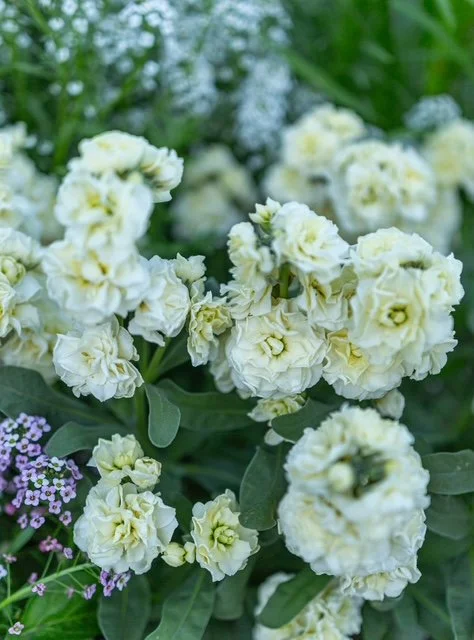Viva la Stocks
You may not naturally associate stocks with Italy, yet after learning Stock’s Italian namesake, you’ll naturally want to pronounce it with your best Italian accent - Mattioli incana. A 16th century doctor and botanist - Pietra Andres Matttioli - identified and appreciated stocks’ medicinal and fragrance characteristics. We like to think Dr. Mattioli would revel in the broad cultivar selection in our day!
Available in a broad selection of hues, from muted to vibrant, stocks really shine as an uncomplicated and versatile garden flower. A member of the brassica or mustard family, stock flowers as well as the pods, are edible. With a mild fragrance and unfussy growing preferences, stocks grow upright similar in habit to larkspur or snapdragons. Stock’s soft, almost fuzzy leaves compliment single or double blooms; blooms that florists appreciate for their durability in the vase. Blooming in spring and preferring growth during the cool spring season, cultivars grow between 12 - 36 inches tall and work well in a variety of garden situations. When temperatures soar, stocks stagnate. However, in our zones 6-7 Boise gardens, stocks remain good-looking in the garden for months adding beautiful texture, sweet scent and lovely color. Unreservedly grow a forest of stocks in your garden!
Growing Method
Stock seeds can be planted in the fall or in early spring, depending on your USDA growing zone. In zones 7 and higher, plant seeds in the fall so they have time to enjoy the mild winter, but cover during the coldest parts of winter. In zones 6 and lower, wait until 10 weeks before the last frost (early March in Boise) and sow two seeds per cell.
Plant out the seedlings when they are about 4-6 weeks old. Stocks need a couple weeks in low temperatures between 45 and 55 degrees to flower, but if it gets well below freezing the plants may need to be covered at night.
Seedlings like to cuddle with a buddy so plant a couple every 4-6 inches.
Harvest the stems when a third of the blooms are open and change water frequently.
Happy planting!



